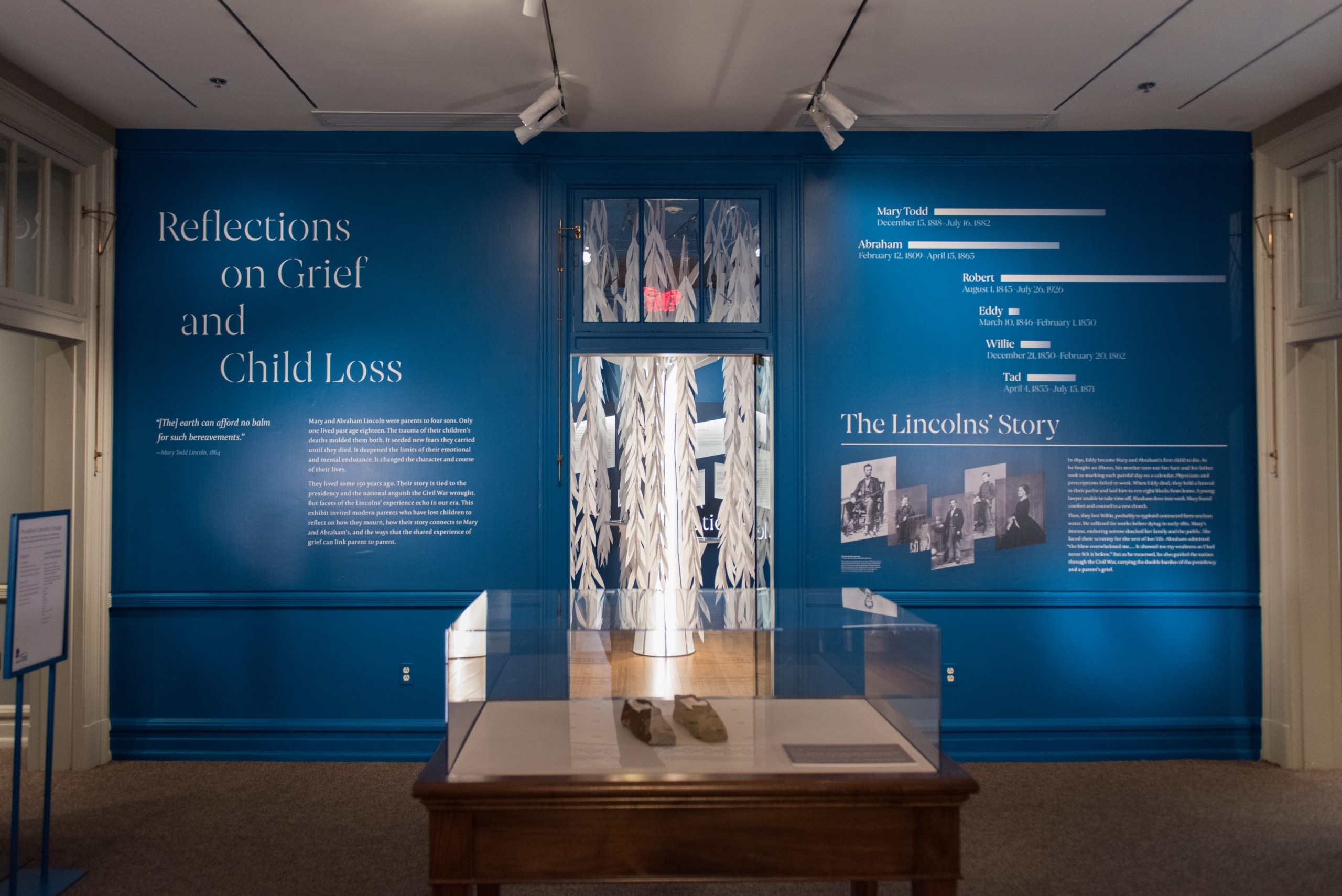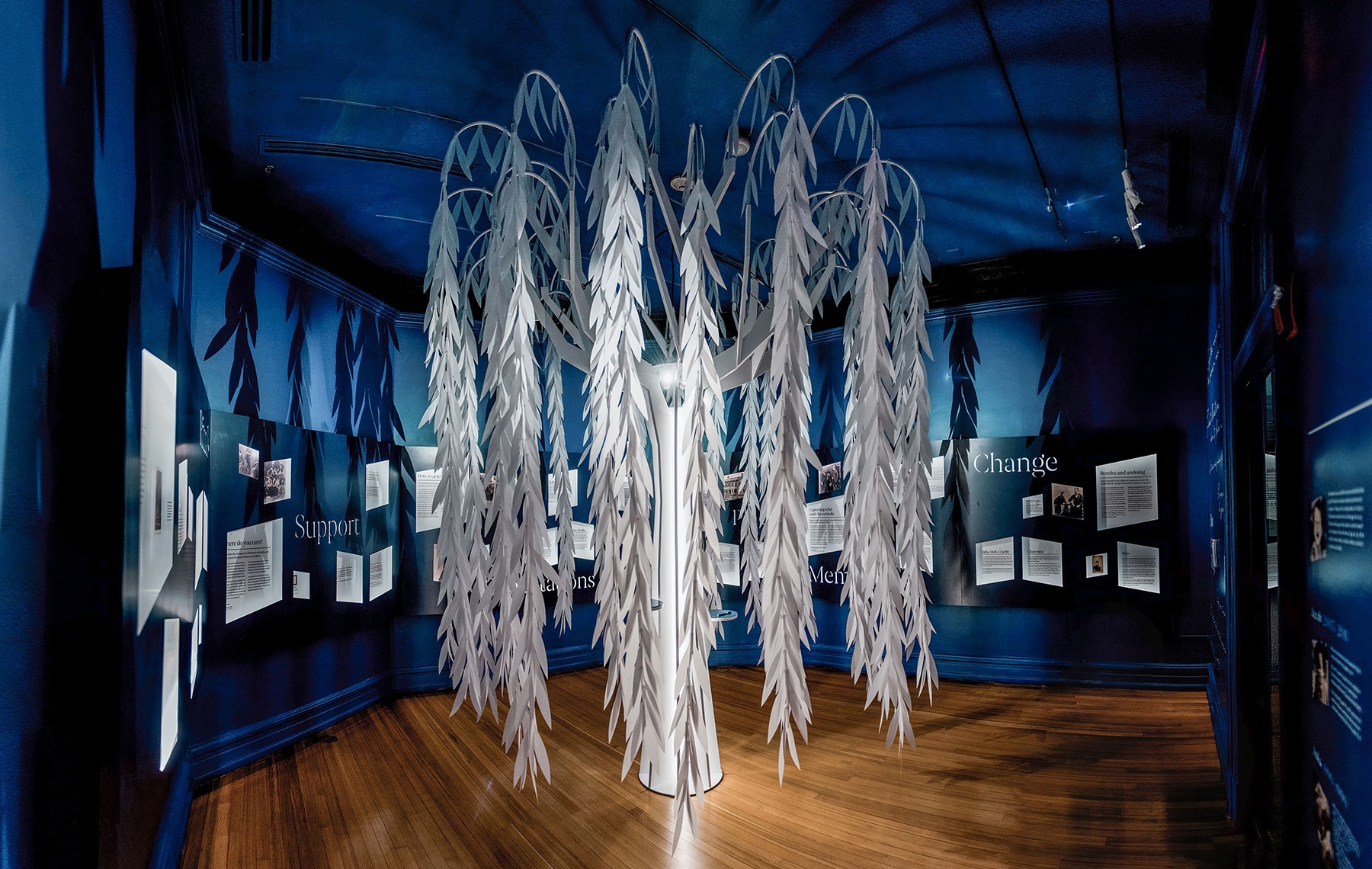
Washington, D.C. – President Lincoln’s Cottage recently opened Reflections on Grief and Child Loss, a new exhibit that builds an understanding of Abraham and Mary Lincoln as bereaved parents and weaves their story together with those of modern bereaved families. Callie Hawkins, the Director of Programming at the Cottage who is currently serving as Interim Director, stated, “The exhibit builds connections between grieving parents today and the Lincolns to find commonalities and meaningful differences across time and experience.”
Abraham and Mary Lincoln were parents to four sons, Eddy, Tad, Robert, and Willie. Only Robert lived past the age of eighteen. The trauma of child loss molded both parents, deepening the limits of their emotional and mental endurance and changing the course of their lives. When Willie Lincoln died in the White House in February 1862, the Lincolns’ grief was on national display. They longed to get away from the bustle of the White House. As Mary Lincoln wrote to a friend, “When we are in sorrow, quiet is very necessary to us.” They found that quiet at the Cottage, located on the grounds of what was then called the Old Soldiers’ Home. “In many ways, the Cottage nurtured their broken hearts,” wrote Ms. Hawkins. The Lincolns grew to love the Cottage, and spent their remaining DC summers there.
To honor the Cottage’s role as a sacred place to nurture broken hearts, President Lincoln’s Cottage began planning an exhibit on grief and child loss in 2019. Ms. Hawkins is herself a bereaved mother, and the connection she felt to the Lincolns in a place of shared sadness and love was part of the inspiration for the exhibit. The exhibits team sought out modern families who have lost children to reflect on how they mourn, how their story connects to the Lincolns, and the ways that the shared experience of grief can link parent to parent, “To our great honor, nine families agreed to share their reflections on different facets of grief including: support, memories, rituals, expectations, place, and change,” she said. One of the bereaved mothers who participated in the exhibit, Karla Helbert, explained the import of participating in the exhibit, “When your child dies, you get no more moments where accomplishments are celebrated or milestones achieved. With Theo being part of this, I get to feel proud that he has a chance to make an impact, bring awareness and potentially create change…”
When Ms. Hawkins envisioned the exhibit, she could not know that the country would soon be gripped with grief on a national scale. Yet, in the midst of a global pandemic, she realized the message of the exhibit was one that urgently needed to be shared, “It was important to us to open it now—at a time when our nation is collectively grieving both the hundreds of thousands of lives lost to COVID-19 and the centuries-old systemic racism resulting from the legacies of slavery in this country. While historic places can’t ‘fix’ any of this, we can hold critical space for grieving visitors,” she said.
Today the museum is open to the public, and visitors can access the experience in the Robert H. Smith Visitor Center with the purchase of a timed entry ticket for the self-guided Cottage tour. Visitors are able to actively participate in the exhibit by sharing a special message to a loved one who has died on a vellum leaf to hang on the central willow tree. “Perhaps, in some small way, this exhibit will signal a shift in how we talk about grief and the expectations we place on those who, as one parent shared in the exhibit, are engaged in the holiest work of all,” Ms. Hawkins said.

Photo by Chris Ferenzi
Contact: Rebecca Kilborne
